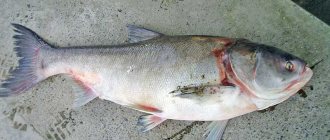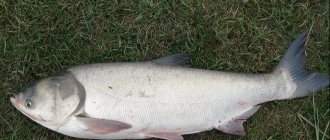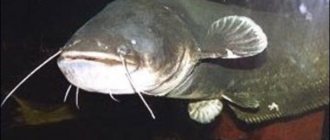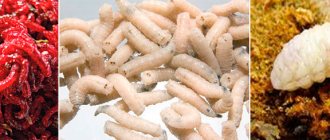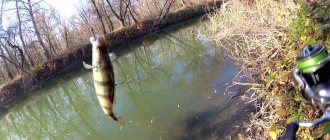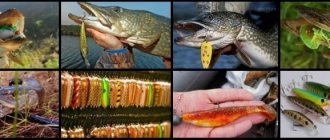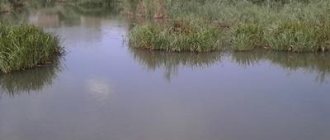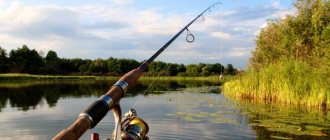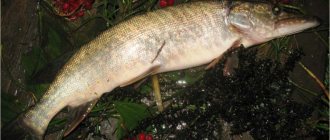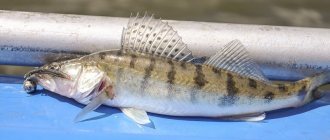General information
Gradually, silver carp fishing is becoming more and more popular. Many strive to catch this strong and dexterous inhabitant of reservoirs.
For commercial purposes, fishing with nets is especially common. Silver carp can also be caught with a seine, but experienced fishermen believe that this cannot be compared with fighting with silver carp one on one. Moreover, silver carp, as this fish is also called, is the only freshwater carp that contains the same fat as its marine counterparts.
Fishing in autumn
Fishing for silver carp in the fall has its own characteristics. Cloudy and cool weather does not please this heat-loving fish at all. In addition, by the beginning of October, all vegetation in the reservoir almost completely disappears. Therefore, silver carp often have to go closer and closer to the bottom to get food, moving further and further from the shore. And when the water temperature drops to eight degrees, it stops feeding altogether, swimming to wintering pits.
The best weather conditions for successful silver carp fishing in the fall are considered to be the absence of wind and light drizzle. At this time, you can find the location of large fish by watching a school of roach, which also swims to shallow water in the hope of finding the last plant food.
Catching silver carp in autumn – About fishing
Catching silver carp in the fall has its own specifics and differs from summer fishing, to which most anglers are accustomed. However, during this period you can also successfully hunt for this fish. To do this, you need to study the reservoir in detail, know the habits of this underwater inhabitant, and select suitable gear and bait.
Over the summer, silver carp gain considerable weight and accumulate a considerable amount of fat. This fish has the most delicious meat in the fall.
Therefore, with the onset of this period, there is no need to put aside your gear and switch to a predator, but you should definitely try to get out to a suitable promising body of water and try to catch this underwater giant.
Features of behavior
Silver carp is a heat-loving fish that is most active in the summer. The warm period is both a favorable time for catching it and a difficult one. There is a lot of food in the reservoir; this underwater representative moves around the reservoir and eats a lot. But not everyone manages to get him to take the hook with bait.
In autumn, on the contrary, aquatic vegetation dies off, there is less food and the silver carp has to look harder for food, without disdaining or over-eating. Now he takes the bait more willingly, but due to his passivity, the number of bites is small.
Silver carp fishing in the fall can be carried out until the water temperature in the reservoir drops below 7º–8º C. After this, the fish moves to deep areas and almost completely stops feeding.
Advice!
It is better to catch silver carp in autumn on paid ponds. Here during this period the most favorable conditions for fishing develop.
In autumn, silver carp move away from shallow waters and do not appear in the coastal zone. Now it occupies medium and deep depths away from the coast. He loves holes, slopes, edges and other uneven areas where he can profit and relax near the shelter.
The most productive fishing for silver carp in autumn occurs at the end of September and October. In the southern regions, fish are successfully caught in November , since there the water cools later and the activity of underwater inhabitants remains longer.
Fishing places
In the autumn, you should not hope to meet silver carp in shallow water areas, in the coastal zone, near hills and shallows.
In rivers, fish are located in areas with slow flows, where the bottom is muddy or clayey. Less commonly found on rocky and pebble soil.
The depths where you should look for this giant range from three to six meters.
As the weather warms up on sunny days, fish may move to shallow places where aquatic vegetation still remains. Schools of small roach, which concentrate in areas with preserved algae, can suggest a promising area for catching silver carp.
In lakes and paid ponds, silver carp fishing in the fall is carried out at some distance from the shore. It is advisable to first study the bottom topography and detect some local depth difference. It could be:
- a hill or bump;
- pit or groove;
- edge, ledge or drop.
Also, silver carp can be located in the area of a separate area with bottom algae or single submerged snags and branches.
Tackle
You can catch silver carp in the fall using a donk, a float rod and a feeder; read more about gear in this article. All directions are good and, with a thoughtful approach, allow you to achieve success in any body of water where fish are found. In general, gear must meet the following requirements:
- impressive power and reliability for fighting large, strong fish;
- range for casting at the required distance to promising points;
- the maximum possible subtlety and lightness, so as not to alarm the overly cautious silver carp.
The fishing line must have a diameter of at least 0.30 mm and be of high quality with a high breaking load. Sometimes a fish weighing about 20 kg can land on a hook, and only a reliable thread will help you cope with the trophy and successfully bring it ashore.
There are also increased demands placed on hooks. Its size must match the bait, but its strength and reliability must be high in order to withstand the jerks of silver carp. Single rifles Nos. 4–6 with a short forearm are more often used.
For float fishing, you can use a telescopic rod with guide rings, a spinning rod or a specialized carp fishing rod. It must have enviable power in order to cast heavy equipment and fish out silver carp.
Photo 1. Installation of float gear.
To perform long casts, you need to attach a reel to the rod. You need either a powerful “meat grinder” or a good old inertia machine. The first is preferable because it allows you to use thinner fishing lines, and the friction brake provides significant advantages when fishing.
Advice!
Be sure to take with you a spacious landing net with a reinforced handle. If you plan to take the caught silver carp, you can additionally take a hook to the pond.
For bottom fishing or feeder fishing, powerful rods with reinforced rings, an impressive margin of safety and good long-range characteristics are used. If there is a high probability of biting a significant trophy, then it is advisable to choose a carp fishing rod.
The leashes used should be thinner than the main line, but not so thin that they easily tear from the jerks of even a small silver carp. A monofilament line with a diameter of around 0.20–0.25 mm is suitable. In reservoirs where it is known that trophy fish are not found there, you can take nylon with a thickness of 0.15–0.18 mm.
Source: https://ribolov-inform.com/lovlya-tolstolobika-osenyu/
Features of autumn fishing
Catching silver carp in September or October requires camouflage and silence. Suspiciousness is a characteristic feature of silver carp. If he suspects something is wrong, he will immediately swim to the depths or for cover. Hearing any extraneous sounds, the silver carp begins to get nervous and make “acrobatic” jumps, jumping out of the water and plopping back down with a huge noise. At this time, he is not at all interested in bait.
The best time to catch the coveted prey is to catch silver carp in the fall, especially in the last two months of this time of year, when the already large fish is already accumulating substantial reserves for wintering.
Their feeding habits allow the silver carp to filter the water, taking out any leftover food from it. Therefore, the likelihood that he will swallow the hook is very high. However, catching silver carp in the fall requires certain knowledge from the fisherman.
September silver carp
Catching this representative of cyprinids in the first autumn month is almost unpredictable. Therefore, experienced fishermen prefer to combine it with hunting for other fish. To do this, use a bait, feeder or carp stick with good load-carrying capacity.
Since catching silver carp in September may involve long casts, the main element in the equipment should be a loaded feeder weighing from forty to seventy grams. The fishing line should have a diameter of 0.25 mm.
At this time, peas cooked until completely boiled - the consistency of a puree - are ideal as complementary food for silver carp. To secure the peas in the feeder, they need to be strengthened with breadcrumbs. The bait can be a foam ball with a diameter of up to eight centimeters. In this case, when casting, the tackle must descend to a clean bottom.
The optimal time for catching silver carp in September is the period when the school is “walking” near the surface. As a rule, these are the morning hours, when the fish bask in the rays of the rising sun near the shallows. Having made a cast to the found place, you don’t have to wait long for a bite. Often, after half an hour, the alarm - a regular bell or its electronic version - goes off.
September fishing technique
In early autumn, during the day, silver carp often stay in open water. At this time, it can easily be found in areas with weak currents or on sandbanks, especially near thickets of aquatic vegetation and riffles. Sometimes he swims up to the very shore before sunset, adhering to the depth and boundaries of the shallows.
The secrets of catching silver carp in the first autumn month are to hold the fish while fishing, since it is distinguished by powerful strength and desperate resistance, and can suddenly jump out of the water to a height of up to one and a half meters. The struggle of silver carp is extraordinary and differs from the behavior of other inhabitants of water bodies. No matter how tired he is, you should not pick him up with your bare hands, as sudden and strong twitches can injure the angler. And in order to get it, it is better to use a hook.
By time of year
Silver carp can be caught all year round. And each season has its own characteristics associated with the behavior of fish in the winter cold, summer heat and off-season.
From the ice in winter
Only a few adherents of winter fishing engage in “hunting” for silver carp in winter. Others believe in fairy tales that this fish is inactive in winter.
And silver carp simply changes their lifestyle in winter . It stays near holes at depth, feeds on what it finds at the bottom - silt deposits and small crustaceans, but does not sleep and is ready to communicate. Of course, in a strong “minus” you should not hope for such a trophy, but when the temperature creeps towards positive levels, the fish become active.
In winter, silver carp “go out for a walk” and eat only during the day. Successful winter groundbait and bait are technoplankton, bloodworms and plant baits. The tackle is donka.
Spring
In early spring, fishing is possible from the ice using winter gear. They switch to summer adaptations when the reservoirs are completely free of ice. But at this time the fish will not please you with catches.
But when the water begins to warm up regularly, the activity of the fish goes off scale, and it performs real dances, jumping out of the reservoirs.
When the water temperature warms up to +18-20, the silver carp begins to prepare for spawning . Before this, the fish actively bites, but during the spawn itself there is a lull, the bite fades to nothing. After spawning, silver carp have a “vacation”: the fish lies down on the bottom, restoring strength. And closer to summer, the “postpartum glutton” begins and the big fishing season begins with the transition to summer gear.
ATTENTION! Once a year, during the breeding season of fish, which usually coincides with the beginning of river floods, a taboo is placed on catching fish (usually for 40 days).
Summer
The peak of the bite is observed in June , when hungry fish greedily rushes for food. Only at the beginning of summer there are mainly small and medium-sized specimens. Fans of trophy silver carp will have to wait until August; large specimens will also catch up.
The most effective are fishing rods and spinning rods. Fishing occurs at a depth of 2-3 meters from the surface of the water. The best bait is algae.
In August, the water bloom stops, the natural diet becomes scarcer, and silver carp reacts more actively to bait. Now that the fish has eaten enough over the summer, a large trophy specimen may also be caught on the hook.
The priority of the August menu is bait of natural origin.
in autumn
With the arrival of frost, fish activity decreases.
Autumn silver carp fishing differs from summer fishing only, perhaps in the depth to which you need to cast the equipment. The rule applies: “The colder, the deeper.”
From the end of October until the spring warmth, fish rarely rise to the surface. Preference is given to bottom gear. In November, the fish go to their “winter pastures” on the bottom. This doesn't mean it's time to hang up. Large fish will not refuse food even in cold weather and with a slow metabolism.
Catching silver carp: advice from the “experienced”
You can catch silver carp where it lacks food. You can easily determine whether there is food in a pond by the color of the water. If it is green, then catching fish will be problematic.
If there is a lot of debris on the pond - twigs, sticks, leaves, then the float should lie down. Having noticed a different “stick” on the water, the silver carp will swim away. Favorite treat is peas. It is most often used for bait, boiled to a puree and adding breadcrumbs so that the mass does not separate.
IMPORTANT! Peas spoil quickly: store complementary foods in a cool, dark place.
This fish is very shy. You need to throw the bait away from the shore. Large silver carp are found in reservoirs. They can damage gear. If one is hooked, there is no need to rush and force the landing. Let the fish get tired. Pull it out little by little, and when it gets close to the shore, use the hook.
Choosing a fishing spot
When choosing a place for fishing, you need to know: if there is a lot of natural food in the reservoir, then there is practically no chance of catching silver carp. This circumstance can be determined visually - by color: the water should not be greenish. But in reservoirs where there is a lack of food supply, you can catch more than one large specimen.
It is better to catch silver carp on relatively small rocky rivers with sharp changes in depth. A place for fishing should be chosen based on the following criteria:
- with a rocky, clay or sandy bottom;
- with a depth of no more than four meters.
Habitats
China is considered to be the birthplace of this commercial fish, then it was spotted in the waters of the Amur. In 1960, it was brought from China to the former USSR. It was bred in artificial reservoirs or in fenced areas of rivers. Subsequently, a wider distribution of fish occurred.
Prefers rivers, lakes and reservoirs with warm temperatures, without strong currents. On the shallows, whole flocks bask in the warm morning sun. They love creeks and bays with warm water, staying in medium, non-cold depths.
Very often, silver carp live in canals and reservoirs near power plants, where warm water is released. They inhabit lakes and rivers with dense vegetation, which are heavily overgrown with grass, with a muddy bottom. Feels great in ponds with standing water.
What to fish with
Until recently, it was believed that any equipment for catching silver carp could be chosen. But it is not so. There are certain requirements for it. But the most important thing is that it must be characterized by increased strength, since we are talking about catching fish with very strong resistance, capable of making fairly powerful throws. That is why the equipment for catching silver carp must be reliable, not torn or broken after the first fishing.
For this purpose, you can use a feeder, a hook, as well as any carp “sticks”, preferably having a good load-carrying capacity. Large specimens are quite shy and very rarely swim closer to the shore than eight or ten meters. Therefore, catching silver carp with a fishing rod is very rare, because the latter must have an impressive length and the ability to cast as accurately as possible, which is not typical for this tackle. However, often when fishing for carp, he himself falls for it.
Fishing for silver carp
TOP popular products for fishing
– buy with good discounts for personal use and as a gift to friends and acquaintances.
Buy quality products at affordable prices in the best fishing online stores
. Give gifts to yourself and your loved ones!
we are in social networks
– follow us on , , and Instagram. Stay up to date with the latest site news.
Silver carp is considered one of the most heat-loving fish. The summer months are considered the most successful for fishing this fish. If you look at the silver carp biting calendar, we will see the following picture:
As you can see, the peak of the silver carp bite occurs in mid-summer. The weather is hottest at this time. In cold weather, you can count on a good bite of silver carp in the artificial cooling ponds of power plants. There the temperature is always above average and the fish take very well.
Silver carp fishing in spring
Active and successful fishing for silver carp begins at the end of April. This is clearly visible on the graph. In mid-spring, with the water warming up and the first vegetation appearing, its biting is more or less active.
In the area where the water is best warmed up and silver carp are caught in the spring. This primarily applies to the southern regions, where in some years the air temperature exceeds 20 degrees.
At this time, the most catchy gear is a donka and a feeder, equipped with springs and a “silver carp stick” tackle, on which a barrel of plankton is attached. The depth in such places does not exceed 3-4 meters. The bottom is silty or clayey.
The most productive fishing occurs in May. When the water warms up to 15 degrees and the first aquatic vegetation covers the bottom of reservoirs, silver carp begins to be caught well using float, feeder and bottom gear.
Targeted fishing for silver carp is justified mainly in artificial reservoirs, where the water is better warmed up and where the concentration of this fish is quite high. Typically, fishing for silver carp is combined with fishing for carp, crucian carp and grass carp.
Since this is a powerful fish, the tackle for it must be durable. It is better to use carp rods or powerful feeder rods with a large traction reel with a baitrunner.
A braided cord with a breaking load of 15 kg or a fishing line with a cross section of 0.35 mm is wound onto the reel. Leashes are used short: from 5 to 10 cm made of wattle or fluorocarbon.
Hooks are used a little less than in summer, Nos. 8-10 according to international numbering.
The most successful time for catching silver carp in May is the period from 8 am to 1 pm. At this time, it actively feeds and is very often tempted by technoplankton, which generates a lot of dust. Fruity scented barrels work great on warm to hot days. Styrofoam, puffed dough and reed shoots are placed on the hooks. The nozzle is located at a distance of 50 cm from the bottom.
The optimal bait for silver carp fishing in spring is store-bought bait with names containing the word “silver carp.” Homemade ones work no worse. We especially note baits with the addition of algae, cucumbers, nettles, reeds, cabbage and wheat bran. The basic components are cereals: wheat, pearl barley, corn and corn.
In the article fishing in spring
you can learn how to catch other fish at this time of year.
Silver carp fishing in summer
Silver carp grows very quickly. It is released into reservoirs to cleanse excess vegetation. This fish actively consumes reeds and algae. The metabolic process proceeds even faster in the summer. The higher the temperature, the more actively the fish feed. Therefore, the summer months are the most suitable for fishing.
To determine whether silver carp will bite well in a particular body of water, just take a closer look at the water. If it is clean and does not bloom, then it will peck. If it is cloudy and blooms, then there is enough food for him and you will have to offer something original and attractive to seduce him.
In summer, donkeys, float and feeder rods are used. Gear is installed at a distance of at least 3 meters from each other. This method of arrangement will not lead to tangling of the equipment.
It is usually caught in areas with slow currents, so there should be no entanglements. In areas with a slow current, green grass is less often present and the water is clearer than in areas without a current.
They are more promising for fishing silver carp in hot weather.
A few words about the nozzles. One of the most successful is young peas. It is placed in boiling water for 5 minutes, in which it increases slightly in size and becomes soft. Alternatively, you can use canned peas.
Canned corn is also placed on the hooks. Young corn kernels are also suitable. They are also cooked a little until soft. Three large grains are placed on a large hook. Some fishermen use a hairline rather than a hook, as when fishing for carp.
It turns out like this:
They do the same with peas.
An excellent bait for catching silver carp are sedge and reed leaves in briquettes, which are mixed with macadamia and flour.
They also use corn leaves and pea pods mixed with the same macadamia. Cucumbers and watermelon skins are also cut into bait. They give a great aroma.
Some fishermen grind these ingredients in a meat grinder and get such a paste that more than one silver carp cannot resist.
And, of course, the most popular equipment for fishing silver carp is a design with a tube on which a barrel is placed.
The barrel smells of different aromas. It begins to gather dust and sooner or later fish are caught on hooks with foam. The barrel collects dust in this way:
Technoplankton includes substances that accelerate the digestion processes of fish. Mainly 11 types of barrels are used. These are vanilla, honey, anise, strawberry, raspberry, herbal, etc.
Go to the summer fishing
to get acquainted with fishing for other types of fish during this period.
How to catch silver carp in the fall
In autumn, you can count on a more or less acceptable silver carp bite in September and the first half of October. This is what we see on the graph. If the weather is warm outside, above 20 degrees, then the fish will bite. It may not be as active as in summer, but several large specimens can be caught using technoplankton.
The ideal weather for silver carp fishing is when there are no clouds in the sky, no wind and the temperature is above 23 degrees.
You can find it at this time if you watch schools of roaches that often visit places with underwater vegetation. Such places are often located in shallow waters. In autumn it is better to use thinner rigs. Instead of regular fishing line, we use fluorocarbon fishing line.
The water is becoming increasingly clear and rough gear will alarm and scare away cautious fish. If we fish close to the shore, we maintain extreme silence. If a silver carp hears a noise, it will quickly swim away from the place and will not return to the bait and technoplankton very soon.
In November the water becomes even cooler. There are very few sunny days and at this time the silver carp goes to wintering pits up to 8 meters deep. Successful fishing for it is possible only in cooling ponds.
Autumn fishing page
There is information about fishing for all river fish in the fall.
Winter fishing for silver carp
On the graph we see a consistently poor bite of silver carp. This is not to say that he sleeps all the time. After the ice is established, it moves into the pits. The process of searching for food does not last long for silver carp. It feeds mainly in the bottom layer. There are enough small crustaceans and insects for him.
You can count on successful winter fishing for silver carp during the thaw. Fishing occurs at the very bottom. Complementary foods, as a rule, are not poured into the holes. Sometimes you can add technoplankton powder. For old times' sake, silver carp are sometimes interested in this food.
It is mainly caught using fishing rods and jigs. Bloodworms and canned corn are placed on the hooks. It is better to use a fishing line with a thickness of 0.25 mm. When fished out, it exhibits powerful resistance. Therefore, you can’t go fishing without a hook.
Read the article: catching silver carp in winter
for detailed information on this topic.
In the sections: ice fishing
and
winter fishing
you will find a lot of useful information about fishing during the period of cold weather and frosts.
On our website – Fishing
– there is a detailed
description of the silver carp fish
and
all the ways to catch it
with various
tackles
.
How to catch certain types of fish depending on the time of year can be read on the fishing calendar
.
Good fishing online stores
will allow you to purchase any
fishing goods
at competitive prices!
Follow us on social networks
– through them we publish a lot of interesting information, photos and videos.
Popular sections of the site:
The fisherman's calendar will allow you to understand how all the fish bite depending on the time of year and month.
The fishing gear page will tell you about many popular gear and devices for fishing.
Fishing baits – we describe in detail live, plant, artificial and unusual ones.
In the bait article you will get acquainted with the main types, as well as tactics for using them.
Learn all the fishing lures to become a real fisherman and learn how to choose the right one.
Source: https://ribalka-vsem.ru/index/rybalka_na_tolstolobika/0-402
Bottom tackle
Experienced fishermen most often use spinning rods with a reel, although some use float gear at shallow depths. However, silver carp often feed in the bottom layer, where they calmly eat plankton. Therefore, catching silver carp with bottom tackle is especially important. Moreover, as the water gets colder, when plant food begins to gradually die off, this type of fishing becomes the only catchable one.
At the same time, catching silver carp using bottom tackle takes into account the special characteristics of the structure of the mouth of this large inhabitant of reservoirs. It does not have the ability to collect food directly at the bottom, so the hooks must be placed at some elevation from the underwater ground, at a distance of at least ten centimeters.
Many people use such tackle as a “silver carp stick”. The principle of its operation takes into account not only the structural features of the silver carp’s mouth, but also the nuances of its nutrition. Technoplankton developed specifically for catching this fish is used as bait, bait and bait. This product looks like a barrel with bait compressed inside, along the axis of which there is a hole for attaching it to a “silver carp stick.”
Technoplankton fishing gear
As a rule, the best time to catch silver carp using plankton is summer. The equipment or so-called stick for silver carp can be supplied to hunting zones using float or bottom gear. The device consists of a diamond-shaped or square type frame with a sliding pin. The pin is used for fastening the granules, and the frame-bracket is for mounting leashes with hooks and attaching the equipment to the tackle cord. Leashes with hooks are attached to the rings of the frame in such a way that they fall into the zone of intense turbidity, where with a high degree of probability they will be sucked up by the fish filtering the nutrient composition that approaches the smell and dust plume.
The hook feed distance is adjusted by the length of the leash. The thickness of the nylon leash is taken to be no less than 0.3 mm. The hooks themselves have a design with a shortened forend, numbers 8-9 according to the domestic classification, and are made of thick wire that can withstand high loads without bending capabilities. Continuing the article, we will consider the criteria for the gear necessary to submit a rig with bait in the form of technoplankton.
Float rod
A float rod is the most effective type of tackle for catching silver carp. Fish most often feed in the middle or upper water horizons, and it is with float rigs that it is convenient to regulate the supply of bait to promising feeding layers of active schools. The gear chosen is a powerful match rod 4–5 meters long, capable of providing long-distance deliveries of heavy rigs and coping with landing large fish. The fishing rod is equipped with a carp spinning reel with a baitrunner and a capacious spool, which should easily accommodate 100–120 meters of monofilament fishing line with a thickness of 0.5 to 0.7 mm.
The float must be made of dense polystyrene and its mass must be suitable for holding the installation in the prospective water horizon. The upper part of the float is painted in a bright color that is noticeable to the eye, the lower surface is masked by painting it in dark green tones. Balancing of equipment is carried out with lead weights. When fishing in windy weather and on currents, the rig is anchored with a sliding weight.
Donka
Fishing for technoplankton can be done with an ordinary classic bottom rod mounted on a heavy spinning or feeder rod equipped with a carp reel. Unlike float rigs, which are fed directly into the fish feeding horizon, the bottom fishing technique involves feeding the rig with technoplankton to the bottom and installing an additional float on the fishing device, which raises the bait in the water column to the level required by the fishing conditions. The foam float plays the role of ballast, and the quiver tip of the tackle acts as a bite alarm. With this method of fishing, hooks can be equipped with foam peas that push leads to the surface, into a plume of turbidity moving to higher water horizons.
Float
To catch this fish, a transparent type of float is used, since ordinary ones can frighten silver carp. In this case, the descent must be selected taking into account the fact that this fish feeds deep from the surface.
If reeds or various sticks are floating on the water surface in a pond, then you can use a balsa float to catch silver carp. At the same time, this equipment should not be positioned vertically, since the fish are alarmed and frightened when all the reeds or small twigs float horizontally on the surface of the reservoir, while the position of the foreign bite alarm is different. The float must be mounted so that it is in the same plane.
Most often, when fishing for silver carp, two types of this component of equipment are used. The first is a spindle-shaped elongated foam float surrounded by several pellets. Its upper part is painted in some color noticeable from a considerable distance, and the lower part, located in the water, is always painted in a protective shade. The second option is ordinary floats that have a not very noticeable antenna. The line in them is passed through the cambric. They are loaded in such a way that they lie on the surface of the water of the reservoir.
Technoplankton and what they eat it with
Technoplankton used for catching silver carp and other carp fish can be divided into two large groups - factory-produced and home-made. Here in front of us lies a store-bought package of technoplankton, we read the composition: grain crops, milk powder, zooplankton.
By zooplankton, I think the manufacturer means dried daphnia and other dry animal components, which are now actively added to expensive series of fishing baits. Actually, from this we can already conclude that there is nothing secret in the composition of technoplankton, and its production can be mastered at home.
On the Internet, if you wish, you can find many recipes for the composition of technoplankton, manuals and video tutorials on its production. Craftsmen design and sell various types of molds for its production. Technoplankton cannot be called cheap bait: a package of three 50 g barrels costs up to 150 rubles on the counter. But the equipment for its production can also cost a pretty penny.
A couple of times we tried to order equipment for pressing technoplankton at home, but we were stopped by the fact that we devote only a few August fishing trips to catching silver carp. Unfortunately, there are not many bodies of water near us with silver carp, but there are regions in which silver carp is a very common fish. Now, if you purposefully fish for it throughout the warm period of the year, then, of course, it makes more sense to organize your own production of technoplankton. But the option of purchasing a ready-made, factory-made product is more suitable for us, so we will skip the topic of making it yourself.
When choosing technoplankton in a store, you should first of all pay attention to its diameter. Most often we come across barrels with a diameter of 20 mm, each 25 g. But we are more suitable for larger barrels, which have a diameter of 40 mm and weigh, respectively, 50 g. They, of course, cost more, but their use is justified by the fact that a large barrel of technoplankton takes longer to dissolve in water. Consequently, the time between recasts increases, we make less fuss and noise and are less alarming to the timid and sensitive silver carp.
The rate of dissolution of technoplankton depends on the quality of its pressing and ingredients, the depth of immersion of the equipment, water temperature and the intensity of waves in the reservoir. As follows from practice, a barrel with a diameter of 20 mm under the most favorable conditions lasts for two hours, but usually it has to be changed after an hour.
A keg twice the size can last from one and a half to three and a half hours. Fishing with three rods at the same time, we spend 5 - 6 packs of technoplankton (3 pieces of 50 g per pack) in one night fishing. The price is about a thousand rubles.
Since a barrel of technoplankton rarely dissolves completely, and usually even after four hours a thin plate with a hole in the middle remains on the tackle, we do not throw away these plates, but after collecting several pieces, we put them on the diamond again and throw them. This results in some savings.
The second point is the smell. On sale you can find technoplankton with the aroma of various fruits and berries, spices, milk and even daphnia. Hand on heart, we were never able to detect with our sense of smell the difference between the smell of, say, banana technoplankton and the aroma of cinnamon. But the statement that silver carp doesn’t care what technoplankton smells like would be premature, since from our first fishing trip and for several years now, we have noticed that silver carp are most interested in technoplankton with the aroma of honey.
Careless fishermen throw away cellophane packages of technoplankton right on the shore, so we noticed that “honey” packages are found in most cases. And then we ourselves became convinced that bites on “honey” happen more often. At the same time, our noses could not distinguish the difference between the honey aroma of technoplankton and other smells! Apparently, the silver carp has a more subtle sense of smell.
Of course, we do not refuse further experiments with odors, and we have had catches of technoplankton with other aromas. But for those who are going to go fishing for bigheaded fish for the first time, we recommend that you definitely have honey technoplankton in your arsenal.
Typically, the expiration date is indicated on the packaging of technoplankton: 12 months from the date of manufacture. In fact, it turns out that technoplankton that has lain in a dry place for a year does not change its properties in any way and continues to catch fish regularly.
It is worth saying that we caught not only silver carp using technoplankton, but also other fish of the carp family. So it is quite possible to talk about technoplankton as some kind of universal bait, and when we have more observations on this matter, we will definitely try to develop this topic in a separate article.
Fishing on top
In this case, you need to feed the bait to the silver carp in such a way that it floats directly on the water surface. To do this, use a water-filling ball or floats with an oval body made of foam, plastic or balsa wood, through the central axis of which a plastic hollow tube passes. The fishing line should be inconspicuous with a diameter of 0.25-0.3 millimeters and a length of up to one and a half meters.
Sometimes pieces of cucumbers and cabbage, peas (canned or boiled), seaweed, soft parts of mushrooms, melon, berries, etc. are used as bait. Silver carp can grab the bait very quickly, but if the hook is not sharp enough, it will spit it out just as quickly and sails away. Often, when choosing a bait, experienced fishermen take into account the fauna of the reservoir in which silver carp are caught.
Fishing methods: equipment
When choosing equipment, it is important to take into account the main characteristics: strength and strength. The silver carp has an impressive size, and at the moment of capture it will offer strong resistance, making sudden movements. Inexperienced fishermen often experience various equipment breakdowns and line breaks. You can fish using bottom and float gear.
Bottom tackle
Basic parameters for donka, usually used for mass commercial fishing:
- leash 0.4 mm in diameter;
- sharp hooks No. 8,9,10;
- rod up to 5 m in length;
- durable fishing line up to 0.5 mm in diameter.
Using bottom tackle is easy. The main thing is that it is powerful and does not break off at the moment of fishing for strong fish.
It is important to pay attention to the strength of the fishing line. Fishermen also recommend using springy feeders with a float if you have bottom gear.
When fishing in the current, place the feeders at least 6 meters from each other to avoid tangling.
Float tackle: spinning rods and carp fishing rods
Main characteristics:
- inertia-free coil;
- a fishing line with a blue float at the top and a brighter one at the top at the bottom to attract fish;
- sliding float for fixing the weight;
- a fishing rod up to 5 m in length in the form of a feeder tube with a foam ball attached;
- a powerful fishing line equipped with a weight with the ability to move back and forth depending on the depth of the reservoir;
- bead as a stopper for the float when immersed in water
- bite alarms for greater comfort when fishing.
The main attention should be paid to the feeder with plankton. You need to hammer it in such a way that the food is washed out evenly and gradually when lowered into the water surface.
Features of the “silver carp killer” tackle
The components of the “silver carp killer” tackle include:
- the float is large in size;
- a feeder with hooks by attaching it at a distance of 25-30 cm from the float;
- large hooks hanging from the end of the fishing rod to hit directly into a cloudy cloud on the water;
- a sliding sinker installed just above the float, which will serve as an anchor.
It’s not difficult to assemble such gear:
- thread the weight through the main line;
- string a float and a stopper onto the fishing line;
- attach the crusher with the bead;
- tie a silver carp stick;
- pick up a feeder (filled with technoplankton) with hooks;
- equip the tackle with a spring;
- bring the leashes out from the stick.
Lure
In reservoirs where there is a lot of food, it is quite difficult to seduce this fish with something original. Bait for silver carp is absolutely necessary, but the quantity should be within reason. A fish can ignore one bait today, and a few days later only catch it. Many fans of this type of hunting know that silver carp is quite original in its choice of complementary foods, although maggots or bloodworms must be a mandatory element in it.
Anglers sometimes use grass bait such as nettle or clover leaves. But most often a crust of bread or canned corn is used as bait. For this purpose, it is better to use a soft French bun. After placing the bread on the hook, you need to pierce the crust twice on both sides. Then unfold it in such a way as to pierce the top with a sting again. This way the crust will stay on the hook better and not fall off when casting. At the same time, its size should not be too small, because while the fish that should be hooked swims up to it, it can be eaten by such small things as roach, rudd, perch or crucian carp.
Silver carp fishing in autumn: tackle and bait
Silver carp, being a schooling fish, has taken root well in many Russian reservoirs. Its population in some of them reaches such volumes that, as fishermen joke, you just have to cast a fishing rod and the coveted trophy will be on the hook. In terms of gastronomic qualities, silver carp is no worse than its fellow bream, and in size and power it even significantly exceeds it.
General information
Gradually, silver carp fishing is becoming more and more popular. Many strive to catch this strong and dexterous inhabitant of reservoirs.
For commercial purposes, fishing with nets is especially common. Silver carp can also be caught with a seine, but experienced fishermen believe that this cannot be compared with fighting with silver carp one on one. Moreover, silver carp, as this fish is also called, is the only freshwater carp that contains the same fat as its marine counterparts.
Fishing in autumn
Fishing for silver carp in the fall has its own characteristics. Cloudy and cool weather does not please this heat-loving fish at all. In addition, by the beginning of October, all vegetation in the reservoir almost completely disappears.
Therefore, silver carp often have to go closer and closer to the bottom to get food, moving further and further from the shore.
And when the water temperature drops to eight degrees, it stops feeding altogether, swimming to wintering pits.
The best weather conditions for successful silver carp fishing in the fall are considered to be the absence of wind and light drizzle. At this time, you can find the location of large fish by watching a school of roach, which also swims to shallow water in the hope of finding the last plant food.
Features of autumn fishing
Catching silver carp in September or October requires camouflage and silence. Suspiciousness is a characteristic feature of silver carp.
If he suspects something is wrong, he will immediately swim to the depths or for cover.
Hearing any extraneous sounds, the silver carp begins to get nervous and make “acrobatic” jumps, jumping out of the water and plopping back down with a huge noise. At this time, he is not at all interested in bait.
The best time to catch the coveted prey is to catch silver carp in the fall, especially in the last two months of this time of year, when the already large fish has already accumulated substantial reserves for wintering.
Their feeding habits allow the silver carp to filter the water, taking out any leftover food from it. Therefore, the likelihood that he will swallow the hook is very high. However, catching silver carp in the fall requires certain knowledge from the fisherman.
Catching this representative of cyprinids in the first autumn month is almost unpredictable. Therefore, experienced fishermen prefer to combine it with hunting for other fish. To do this, use a bait, feeder or carp stick with good load-carrying capacity.
Since catching silver carp in September may involve long casts, the main element in the equipment should be a loaded feeder weighing from forty to seventy grams. The fishing line should have a diameter of 0.25 mm.
At this time, peas cooked until completely boiled - the consistency of a puree - are ideal as complementary food for silver carp. To secure the peas in the feeder, they need to be strengthened with breadcrumbs. The bait can be a foam ball with a diameter of up to eight centimeters. In this case, when casting, the tackle must descend to a clean bottom.
The optimal time for catching silver carp in September is the period when the school is “walking” near the surface. As a rule, these are the morning hours, when the fish bask in the rays of the rising sun near the shallows. Having made a cast to the found place, you don’t have to wait long for a bite. Often, after half an hour, the alarm - a regular bell or its electronic version - goes off.
September fishing technique
In early autumn, during the day, silver carp often stay in open water. At this time, it can easily be found in areas with weak currents or on sandbanks, especially near thickets of aquatic vegetation and riffles. Sometimes he swims up to the very shore before sunset, adhering to the depth and boundaries of the shallows.
The secrets of catching silver carp in the first autumn month are to hold the fish while fishing, since it is distinguished by powerful strength and desperate resistance, and can suddenly jump out of the water to a height of up to one and a half meters.
The struggle of silver carp is extraordinary and differs from the behavior of other inhabitants of water bodies. No matter how tired he is, you should not pick him up with your bare hands, as sudden and strong twitches can injure the angler.
And in order to get it, it is better to use a hook.
Choosing a fishing spot
When choosing a place for fishing, you need to know: if there is a lot of natural food in the reservoir, then there is practically no chance of catching silver carp. This circumstance can be determined visually - by color: the water should not be greenish. But in reservoirs where there is a lack of food supply, you can catch more than one large specimen.
It is better to catch silver carp on relatively small rocky rivers with sharp changes in depth. A place for fishing should be chosen based on the following criteria:
- with a rocky, clay or sandy bottom;
- with a depth of no more than four meters.
What to fish with
Until recently, it was believed that any equipment for catching silver carp could be chosen. But it is not so. There are certain requirements for it.
But the most important thing is that it must be characterized by increased strength, since we are talking about catching fish with very strong resistance, capable of making fairly powerful throws.
That is why the equipment for catching silver carp must be reliable, not torn or broken after the first fishing.
For this purpose, you can use a feeder, a hook, as well as any carp “sticks”, preferably having a good load-carrying capacity. Large specimens are quite shy and very rarely swim closer to the shore than eight or ten meters.
Therefore, catching silver carp with a fishing rod is very rare, because the latter must have an impressive length and the ability to cast as accurately as possible, which is not typical for this tackle.
However, often when fishing for carp, he himself falls for it.
Bottom tackle
Experienced fishermen most often use spinning rods with a reel, although some use float gear at shallow depths.
However, silver carp often feed in the bottom layer, where they calmly eat plankton. Therefore, catching silver carp with bottom tackle is especially important.
Moreover, as the water gets colder, when plant food begins to gradually die off, this type of fishing becomes the only catchable one.
At the same time, catching silver carp using bottom tackle takes into account the special characteristics of the structure of the mouth of this large inhabitant of reservoirs. It does not have the ability to collect food directly at the bottom, so the hooks must be placed at some elevation from the underwater ground, at a distance of at least ten centimeters.
Many people use such tackle as a “silver carp stick”. The principle of its operation takes into account not only the structural features of the silver carp’s mouth, but also the nuances of its nutrition.
Technoplankton developed specifically for catching this fish is used as bait, bait and bait.
This product looks like a barrel with bait compressed inside, along the axis of which there is a hole for attaching it to a “silver carp stick.”
Float
To catch this fish, a transparent type of float is used, since ordinary ones can frighten silver carp. In this case, the descent must be selected taking into account the fact that this fish feeds deep from the surface.
If reeds or various sticks are floating on the water surface in a pond, then you can use a balsa float to catch silver carp.
At the same time, this equipment should not be positioned vertically, since the fish are alarmed and frightened when all the reeds or small twigs float horizontally on the surface of the reservoir, while the position of the foreign bite alarm is different. The float must be mounted so that it is in the same plane.
Most often, when fishing for silver carp, two types of this component of equipment are used. The first is a spindle-shaped elongated foam float surrounded by several pellets.
Its upper part is painted in some color noticeable from a considerable distance, and the lower part, located in the water, is always painted in a protective shade. The second option is ordinary floats that have a not very noticeable antenna. The line in them is passed through the cambric.
They are loaded in such a way that they lie on the surface of the water of the reservoir.
Fishing on top
In this case, you need to feed the bait to the silver carp in such a way that it floats directly on the water surface.
To do this, use a water-filling ball or floats with an oval body made of foam, plastic or balsa wood, through the central axis of which a plastic hollow tube passes.
The fishing line should be inconspicuous with a diameter of 0.25-0.3 millimeters and a length of up to one and a half meters. Sometimes pieces of cucumbers and cabbage, peas (canned or boiled), seaweed, soft parts of mushrooms, melon, berries, etc. are used as bait.
A silver carp can grab the bait very quickly, but if the hook is not sharp enough, it will just as quickly spit it out and swim away. Often, when choosing a bait, experienced fishermen take into account the fauna of the reservoir in which silver carp are caught.
Lure
In reservoirs where there is a lot of food, it is quite difficult to seduce this fish with something original. Bait for silver carp is absolutely necessary, but the quantity should be within reason.
A fish can ignore one bait today, and a few days later only catch it.
Many fans of this type of hunting know that silver carp is quite original in its choice of complementary foods, although maggots or bloodworms must be a mandatory element in it.
Anglers sometimes use grass bait such as nettle or clover leaves. But most often, a crust of bread or canned corn is used as bait. For this purpose, it is better to use a soft French bun. After placing the bread on the hook, you need to pierce the crust twice on both sides.
Then unfold it in such a way as to pierce the top with a sting again. This way the crust will stay on the hook better and not fall off when casting.
At the same time, its size should not be too small, because while the fish that should be hooked swims up to it, it can be eaten by such small things as roach, rudd, perch or crucian carp.
Source: https://FB.ru/article/157186/lovlya-tolstolobika-osenyu-snasti-i-prikormki
